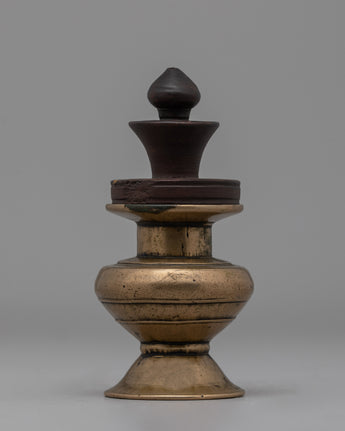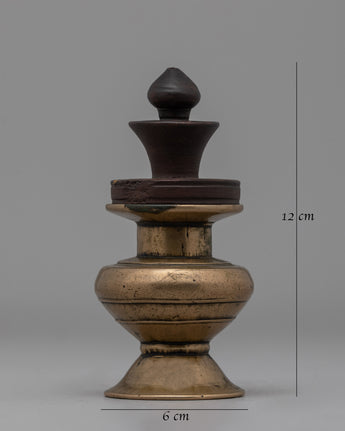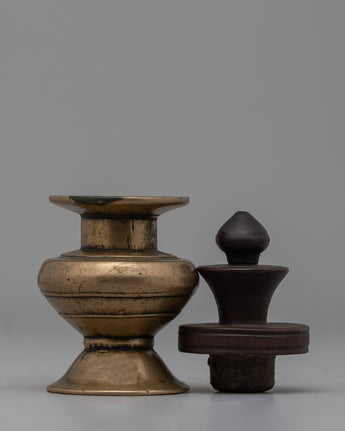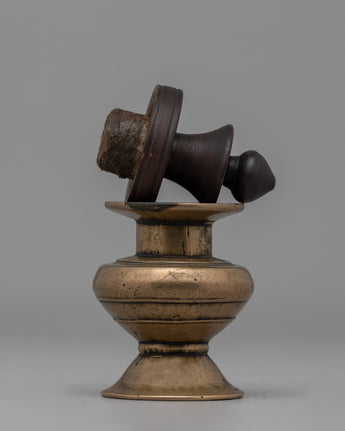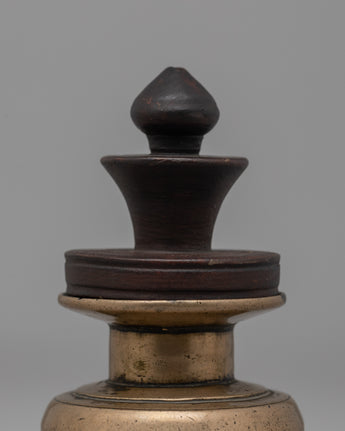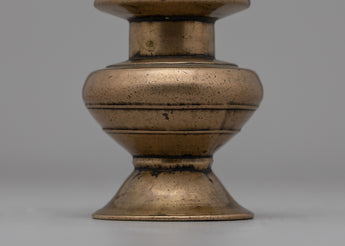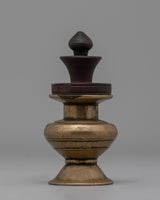
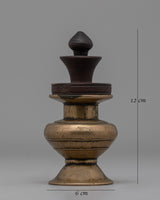


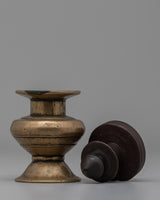
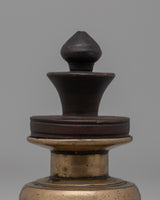
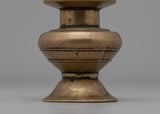
Traditional Tibetan Inkpot | Bronze and Wood Writing Tool for Rituals and Decor

100% AUTHENTIC

HANDMADE

FREE SHIPPING
Traditional Tibetan Inkpot - Historical and Decorative Piece
About The Ritual Item :
This Traditional Tibetan Inkpot is a stunningly constructed item with a bronze body and a wooden cap, representing both useful and artistic skill. This inkpot, measuring 12 cm in height and 6 cm in breadth, is more substantial than normal portable models, indicating that it was intended for more conspicuous or ceremonial use. Its strong bronze substance represents durability and strength, traits that have made bronze a highly valued commodity throughout history. The wooden cap with a dome-shaped knob serves as a useful tool for protecting the ink, keeping it secure and avoiding evaporation. The wooden cap's design gives an attractive touch, naturally contrasting with the metal and highlighting the balance of strength and nature.
In historical and cultural environments, inkpots like this were essential equipment for academics, monks, and administrators to write, create manuscripts, and practice writing. In Buddhist and Hindu cultures, such inkpots were frequently used to translate sacred writings or make elaborate writings, symbolizing both intellectual and spiritual struggle. The exquisite form with a slightly extended base ensures stability, while the layered structure adds aesthetic value, highlighting the superb craftsmanship seen in traditional Tibetan artifacts. This inkpot certainly had both useful and ceremonial purposes, maybe in major rites or academic contexts.
The substances' symbolism is significant: bronze denotes timelessness and the importance of recorded information, while wood ties the piece to nature, evoking harmony between human creativity and the natural world. Currently, this inkpot is not only a historical and utilitarian tool, but also a cultural and artistic work. This inkpot, whether used in a writing ritual or exhibited as an attractive piece of décor, exemplifies the value of knowledge, holy writing, and Tibetan craftsmanship's eternal heritage.
Introduction To The Ink Pot :
Historical Tibetan ink pots are remarkable artifacts that reflect the cultural and intellectual heritage of Tibet. Used by monks, scholars, and calligraphers, these ink pots played a vital role in creating sacred texts, intricate mandalas, and official documents. Typically crafted from materials like bronze, copper, or wood, they combine functionality with artistic elegance, often featuring intricate designs inspired by Tibetan aesthetics and symbolism. Beyond their practical use, these ink pots symbolize the reverence for knowledge and artistry in Tibetan society, offering a glimpse into a rich tradition of intellectual and spiritual pursuits.
--------------------------------------------
Size: 12 cm(Height) x 6 cm(Width)
Weight: 0.21 kg
Materials: Bronze Body, Wooden Cap
--------------------------------------------
How to set up your own Buddhist Shrine?
Find a clean, quiet, and uncluttered spot
Set up an altar table, and cover it with an altar cloth that calls to you
Place your sacred item (statue, thangka, or a picture of Buddha) at the center


